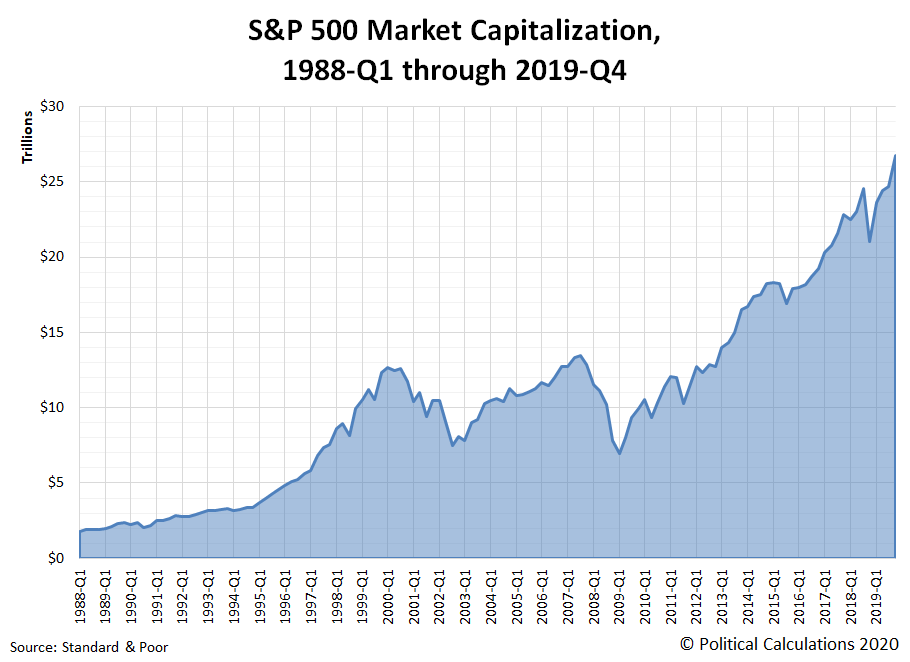As of the end of 2019, the total market capitalization of the S&P 500 was $26,759,686,786,884. Or if you prefer, approximately $26.76 trillion!
That's 14.8 times the value of the S&P 500's market capitalization at the end of 1988-Q1, when the index' market cap stood at $1.81 trillion. From 1988-Q1 to 2019-Q4, the S&P 500's total market capitalization has doubled three times, completing its first doubling period in 7 years from 1988-Q1 to 1995-Q1, taking another 2.5 years to double again by 1997-Q3, and then another 16 years to double a third time in 2013-Q3.
Measured a little differently, the market cap of the S&P 500 as a percentage of the U.S. Gross Domestic Product at the end of 2019-Q3, the most recent quarter for which we have a somewhat finalized estimate, was 114.7%. That's close to the highest the S&P 500's total market cap has been since the days of the Dot-Com Bubble, when that figure peaked at 126.8% in the first quarter of 2000.
We won't know until the end of March 2020 how the S&P 500's market cap compares to the size of the U.S. economy through the end of 2019, when the estimate for the United States' GDP in 2019-Q4 is somewhat finalized.
References
Silverblatt, Howard. Standard & Poor Index Earnings and Estimates. [Excel Spreadsheet]. 16 January 2020. Accessed 23 January 2020.
U.S. Bureau of Economic Analysis. GDP and Personal Income Interactive Data. National Income and Product Accounts. Table 1.1.5. Gross Domestic Product. [Online Database]. Accessed 23 January 2020.
Labels: market cap, SP 500
Welcome to the blogosphere's toolchest! Here, unlike other blogs dedicated to analyzing current events, we create easy-to-use, simple tools to do the math related to them so you can get in on the action too! If you would like to learn more about these tools, or if you would like to contribute ideas to develop for this blog, please e-mail us at:
ironman at politicalcalculations
Thanks in advance!
Closing values for previous trading day.
This site is primarily powered by:
CSS Validation
RSS Site Feed
JavaScript
The tools on this site are built using JavaScript. If you would like to learn more, one of the best free resources on the web is available at W3Schools.com.

